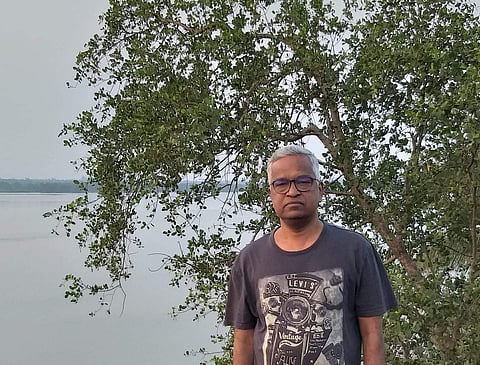

After spending a year in New Delhi, Suraj wanted to learn Kannada and understand the history and beauty of its literature. Hence, he has been attending the free Kannada classes at Jawaharlal Nehru University (JNU) in New Delhi conducted by Professor Purushothama Bilimale who is Kannada Language Chair at the School of Language, Literature and Culture Studies at JNU.
Thanks to the classes, Suraj can speak basic Kannada and read nameplates too. He plans to learn much more from his teacher. Like Suraj, there are many youngsters in India and abroad who are conducting research on the language and want to speak, read and write it. Therefore, Prof Purushothama, in coordination with the department, has created an online platform called Kannada Kalike. It can be accessed by anyone across the globe.
This Kannada professor, who has given many years of service to the Kannada University in Hampi and then served as Director (Programmes) at the American Institute of Indian Studies in New Delhi and currently teaches at JNU, says, "I approached the Kannada and Culture Department and proposed the idea of starting an online platform. They readily agreed to it and sanctioned Rs 30 lakh for the initiative. But calling for tenders and handing over the work to the right people took almost a year. There are several websites which are available to teach languages like Hindi, Tamil, Telugu and others. But there are few websites that have quality and meaningful content which helps one learn Kannada. Hence, our website is designed in such a way that anyone can learn Kannada up to the intermediate level. By this, I mean that they will be able to read small sentences, introduce themselves, greet each other, read the boards in Kannada, understand what others are talking about and so on. Currently, there are 12,000 students in JNU, out of which, at least 2,000 students are involved in research about languages and their origin. They are making the most of this platform."
So, what's on the website?
There are two different categories for one to opt for when it comes to learning Kannada on this website. While one category teaches you the basic grammar, the other category has videos in Kannada that talk about topics like globalisation, Kannada in journalism, modern agriculture, colours and costumes used in Yakshagana and the list goes on, so that you can improve your vocabulary. Under the grammar category, one can not only learn to write the alphabet, but they can watch and listen to the pronunciation too. So for every letter, there is a video that has been posted on the website. The lessons start with swaragalu (vowels) and vargiya vyanjanagalu (structured consonants). According to Purushothama, anyone who accesses this particular video can learn to write the alphabet in an hour or two.
There are a total of 18 lesson modules covering basic language rules required to read, write and speak in Kannada. After letters, students learn nouns, pronouns, present tense, past tense, participles, adjectives, sentences without verbs and so on. At the end of every lesson, homework is assigned to students which, after completion, can be sent to a particular email ID. Purushothama checks the homework and replies to every email personally. He says, "No matter what, I dedicate two to three hours on Friday to check the homework done by students. You will be surprised to know that there are students from Australia, USA, UK and other countries who email their homework to me. And I never miss out on replying to them."
Apart from this, students have to watch the videos on the website and write down every word and its meaning. They will come across at least 400 words in every video they watch. In the coming days, Purushotham wants to reduce the number of words and make the videos shorter to make it easier for his students.
Free classes to the fore
The professor says, "I have put up a board in the university campus about free Kannada classes and there are 40 students who attend my classes. There are people from all the states including Bihar, Jharkhand, Tamil Nadu, Kerala and some have even come from China and other countries. My first class will be about the History of the language and to make it more interesting, I will tell them about Kannada in the 8th, 9th, 12th and 21st centuries. This way, they will understand that what they will learn now is the language of the 21st century. Gradually, I tell them about Kannada alphabet, consonant clusters and much more."
